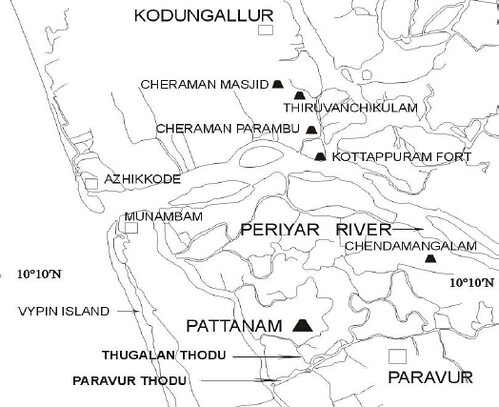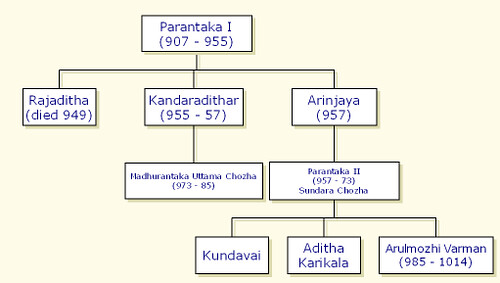Few days back, we had a review of Kalki’s epic novel Ponniyin Selvan and had the question – where does a historical novelist get his characters from?
Books on Indian history talk mostly about the North Indian dynasties and only a few lines are spent for the South Indian ones. Even in those few lines, only the famous kings are mentioned and details are just glossed over. Thus when it comes to the Cholas, you may hear about Raja Raja Choza I and Rajendra Choza, but not about Parantaka I or Parantaka II.
The Chozha dynasty
One of the authoritative histories of South India, Nilakanta Sastri’s A History of South India provides more detail. According to Sastri, Parantaka I ascended the throne on 907 A.D and ruled for forty-eight years. Even though there was prosperity during his time, thirty years (955 – 85) after his reign there was a period of weakness and confusion. Parantaka I was succeeded by his son Gandaraditya who with his queen Sembiyan-mahadevi played a major role in religion than in politics. By the time of the death of Gandaraditya in 957, the Choza dynasty had shrunk to the size of a small principality. Gandaraditya’s brother Arinjaya ruled only for a year and was succeeded by his son Sundara Choza Parantaka II.
His son Aditya II was made the yuvaraja and and Sundara Chozha turned his attention to the south to defeat Vira Pandya. Sundara Choza defeated him and Vira Pandya was killed by Aditya II. The last years of Sundara Chozha were clouded with tragedy and this is the story told by Kalki’s novel, Ponniyin Selvan.
According to Nilakanta Sastri, Uttama Choza conspired to murder Aditya II and compelled Sundara Chozha to recognize him as the heir apparent. He ruled till 985 A.D and after that Arulmozhi Varman, Sundara Chozha’s second son took over and started the period of Choza imperialism.
That’s all the information. So where does a novelist turn to find other characters and details of life at that time? What about Vandiyathevan or the conspirators Ravidasan and Soman, or Nandini? Did they really exist or were they created by Kalki?
Kalki’s other sources were stone inscriptions, copper plates and other books. There is a stone tablet in the great temple of Thanjavur which has the following inscription: “The revered elder sister of Raja Raja Chozhar, the consort of Vallavarayar Vandiyathevar, Azwar Paranthakar Kundavaiyar”. The book sources were K.A.Nilakanta Sastri’s The Chozas and T.V.Sadasiva Pandarathar’s Pirkala Chozhar Charitttiram. The second book has a five line reference to Vandiyathevan and from that, he became the hero of this novel. The names of the conspirators also came from a stone inscription.
Lot of information about the activities of various kings came from inscriptions like these as well as copper plates like the Anbil one. The Thiruvalangadu copper plates state, “The Choza people were very keen that after Sundara Chozan, Arulmozhi Varman should ascend the throne and rule their country. But Arulmozhi Varman respected the right of his Uncle Uttama Chozhan, the son of his father’s younger brother, Kandaradithan, to the throne and crowned him King”.
In the conclusion of the novel, Kalki frames a set of questions which the reader may have about the characters after the end of the novel and he talks about each one of them, but does not give any sources for the information.
Tags: Ponniyin Selvan Tamil Indian History Tamil History

